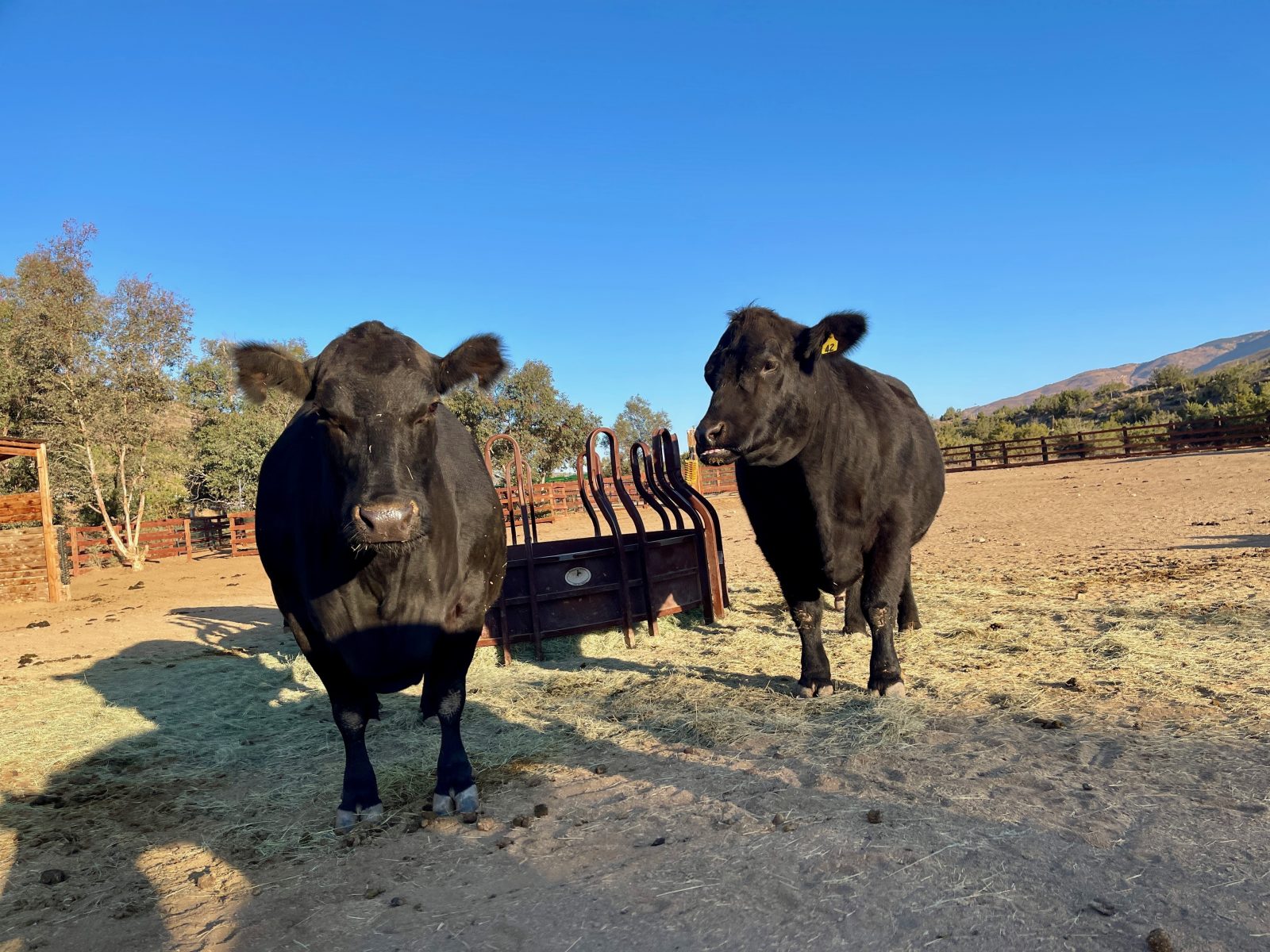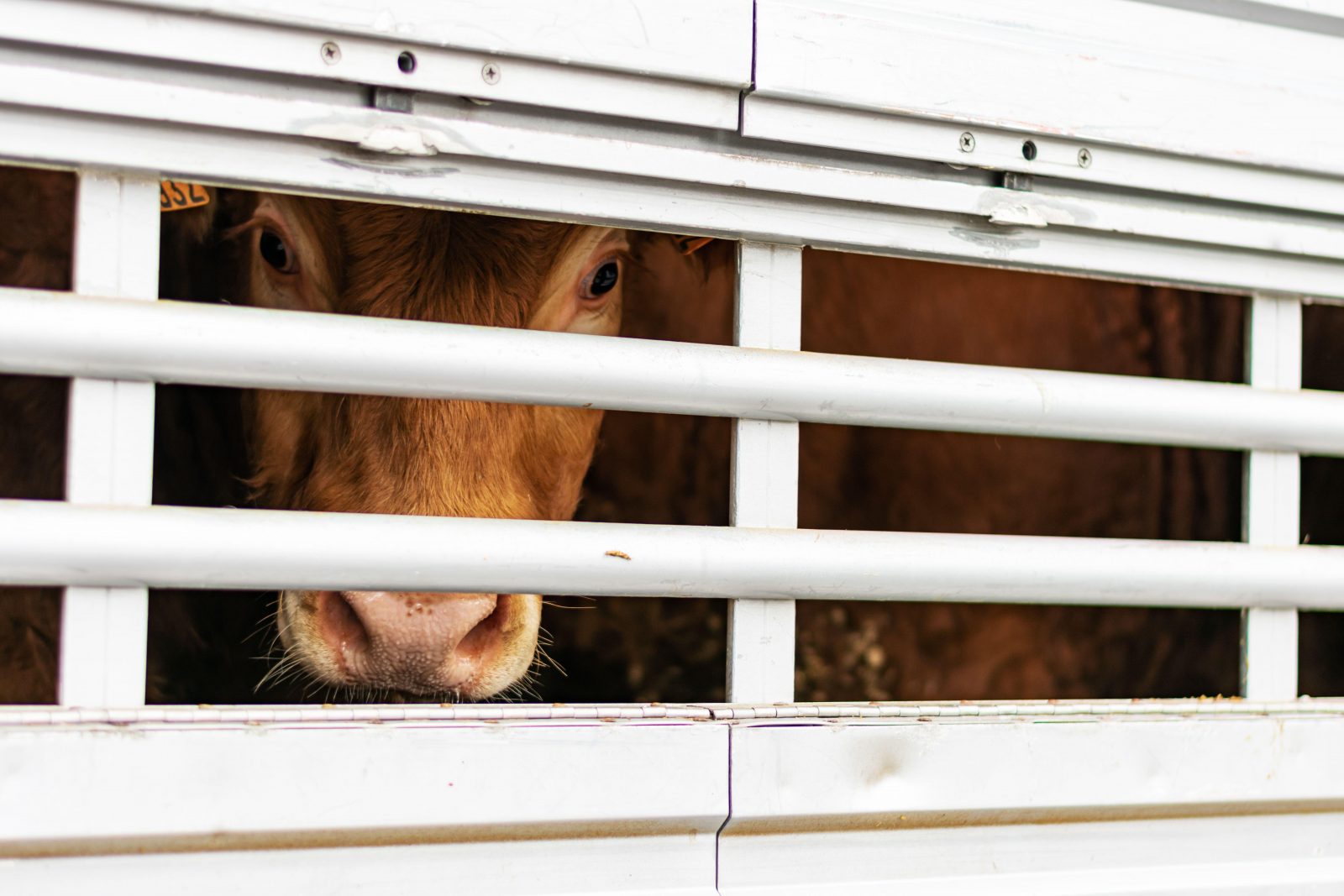Some are so malnourished you can feel every bone in their bodies, their hips protrude at sharp angles under their wool. Others have wool break, a condition usually caused by illness or stress and characterized by handfuls of wool that break off at the skin. They have been starved, some nearly to death. But they are alive. They made it. And now, their new lives may begin.
Elderly Starving Sheep are Saved

Elderly Starving Sheep are Saved
The sheep are old and frail. Some have one or two teeth left; others have none.

Backyard Butcher's Cruelty and Neglect
Animal Control officers recently rescued a group of animals, including these sheep, from a backyard butcher in the Los Angeles area who has a history of animal abuse and neglect. On the repeat offender’s property, more than a dozen sheep, one goat, and a calf were struggling to stay alive on bread scraps. The bodies of victims who had already perished lay nearby. Backyard butcher operations are common in the area, and they are becoming more common in many places. The neglect witnessed at this particular business is not, unfortunately, an aberration. Many backyard producers allow their animals to live in filth and deprivation, not bothering to provide even the most basic nutrition and care.
Officers seized the living animals from this property and brought them to an agency facility, where two of the sheep, their bodies irreparably depleted, were euthanized. A third sheep gave birth to a stillborn lamb; she was too old and weak to carry a healthy lamb to term. Another, however, delivered a living daughter. This new mother, one of the toothless elders, accepted the bereaved ewe as a helpmate, and “Auntie” is now devoted to her friend and the tiny new lamb.

A New Life
It was because of this lamb that we became involved with the rescue. Farm Sanctuary staff members became aware of the youngster and her mother when their photo appeared on an area adoption board for farm animals in need at a local shelter. We wanted to make sure that the two were not separated in the course of placement, so we reached out to the Animal Control agency.
Officers assured us that they intended to keep the family together. When we learned about what this entire group had been through, we offered to welcome them all to our shelters for rehabilitation and, from there, to help find homes for those who would be good candidates for adoption. Those animals needing extra care could, of course, remain residents of our sanctuary. Because the animals were part of a legal case, however, they could not be released to us for several weeks. During this time, they received care from the vet who serves our Southern California Shelter.
At Sanctuary
When the animals finally came to our shelter near Los Angeles, caregivers helped the vet perform ultrasounds on the goat and the adult sheep — all of them females. Thankfully, none of these severely depleted individuals were pregnant, although many recently had children and still had udders full of milk.
We determined that the goat and one sheep, a Black Bellied Barbados, would remain at our Los Angeles area sanctuary, while the other 13 sheep and the calf continued their journey to our Northern California Shelter for more critical care, which we could best provide at our larger facility.
At our Orland Shelter, caregivers had already begun intensive rehabilitation for the newcomers. The animals require treatment for severe upper respiratory infections, fungal skin infections, parasites, sores, and lacerations. We’ve cleaned the caked excrement from their coats. We’ve trimmed their hooves, many of them cracked, soft, or so overgrown that they’ve curled. Some have hoof rot and foot abscesses. One sheep has a horribly torn and infected ear. We’ve dressed their wounds and will continue treating them. We’ve also performed dental checks and have started the group on nutritious diets, including a special soft mash for the ones who are missing teeth.
One sheep is receiving treatment for a severe case of mastitis (an udder infection), and about half of the sheep are producing some milk. Because our ultrasounds revealed no pregnancies, we’ve concluded that these ewes gave birth shortly before their rescue. All appear to have been bred repeatedly. We suspect the butcher used these aging sheep to breed lambs for his customers and probably killed the babies within earshot of their mothers. Mother sheep love their lambs fiercely. Losing their sons and daughters, and in such a brutal way, must have been torture for them.

An Enduring Bond
Because of all they have been through together, this special flock of older sheep has formed an incredibly tight bond and clings to each other for support. There is one sheep who habitually rests her head on her friend’s back, and we can see that they are an immense comfort to each other.
This strong flock bond no doubt helped these sheep endure their darkest hours. And, a community of rescuers helped bring this group of animals into the light. It is only with the support of Farm Sanctuary members and donors that we have been able to undertake the extensive transport, veterinary treatment, housing, food, and ongoing care that rescues like this one require. Thank you for your support. To help ensure the animals in desperate need can be saved and rehabilitated at one of our sanctuaries, you can make a gift to our Emergency Rescue Fund.

Rescue Update: Oh, Baby!
This week we received a dramatic reminder that technology is not infallible! When we welcomed this flock to our Southern California Shelter, the sanctuary’s regular vet performed sonograms on all the adults and found no pregnancies. This was a bit of a surprise to us considering the breeding practices of backyard butchers, and, because to our eyes, some of the animals appeared to be in advanced stages of pregnancy.

We transported most of the animals to our Northern California Shelter, leaving only Claire (the rescue’s sole goat) and Felicity (her dear sheep friend) to reside at our Los Angeles sanctuary. At both shelters, we have continued diligently treating the animals’ tenacious respiratory infections and providing lots of healthy food to help them gain much-needed weight.
On March 12, we found out that some of that weight was not food! During their evening rounds that day, Southern California Shelter caregivers discovered that Claire had just given birth to a daughter, who was named Erika. The arrival was a surprise, but a very happy one. Erika is tiny, but bursting with life. She loves to burrow and make nests in the straw. Her mom and her Aunt Felicity adore her.

In light of this development, we decided to do another round of sonograms on the sheep who are settling in at our Northern California Shelter. Lo and behold, two elderly ewes named Butterworth and Jemima are pregnant — and they’re due very soon. Because of their age, these sheep are at heightened risk for pregnancy complications, so we will monitor them 24/7 until their deliveries. We are braced to help them and their newborns through what may be a difficult time, but we are also excited for them. Sheep are devoted mothers, and caring for their babies is one of their greatest joys. Butterworth and Jemima have probably had many of their newborn lambs taken away from them in the past. Now they are in the safe environment of Farm Sanctuary, and we will do everything we can to give them the chance to experience the joys motherhood at last. We’ll keep you posted!





